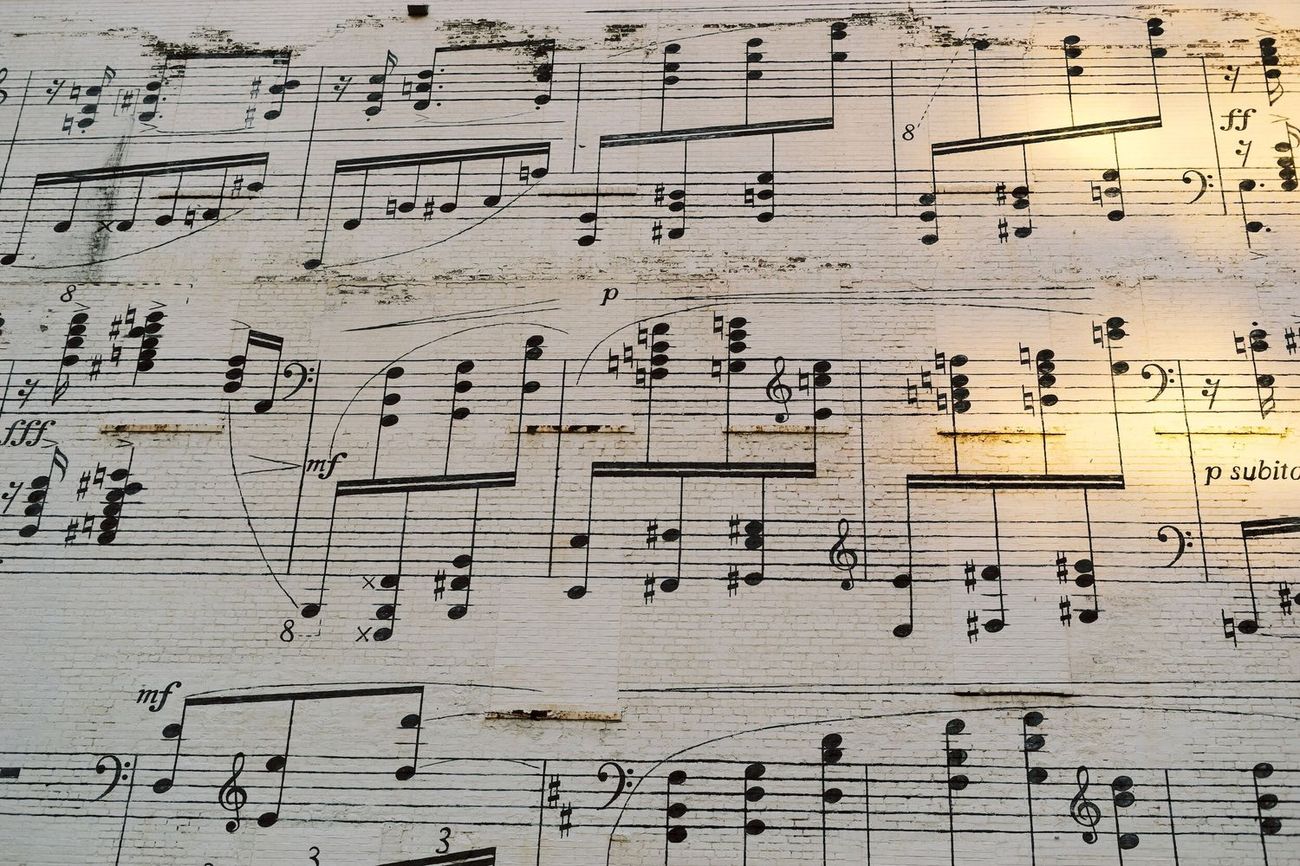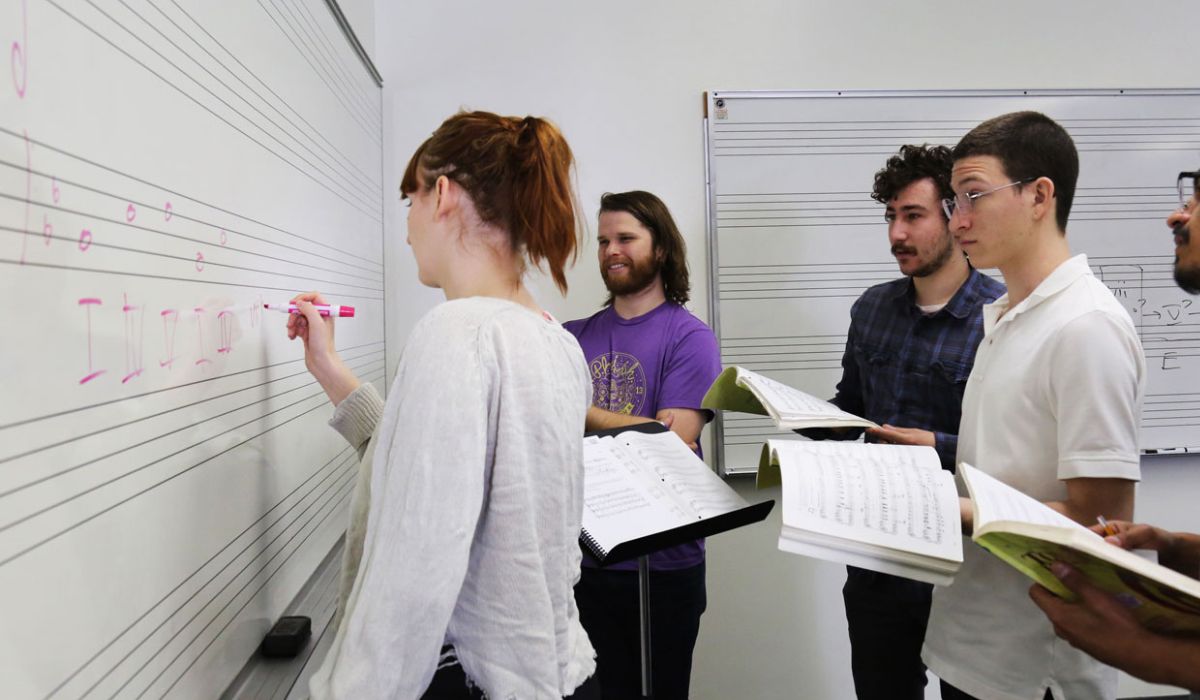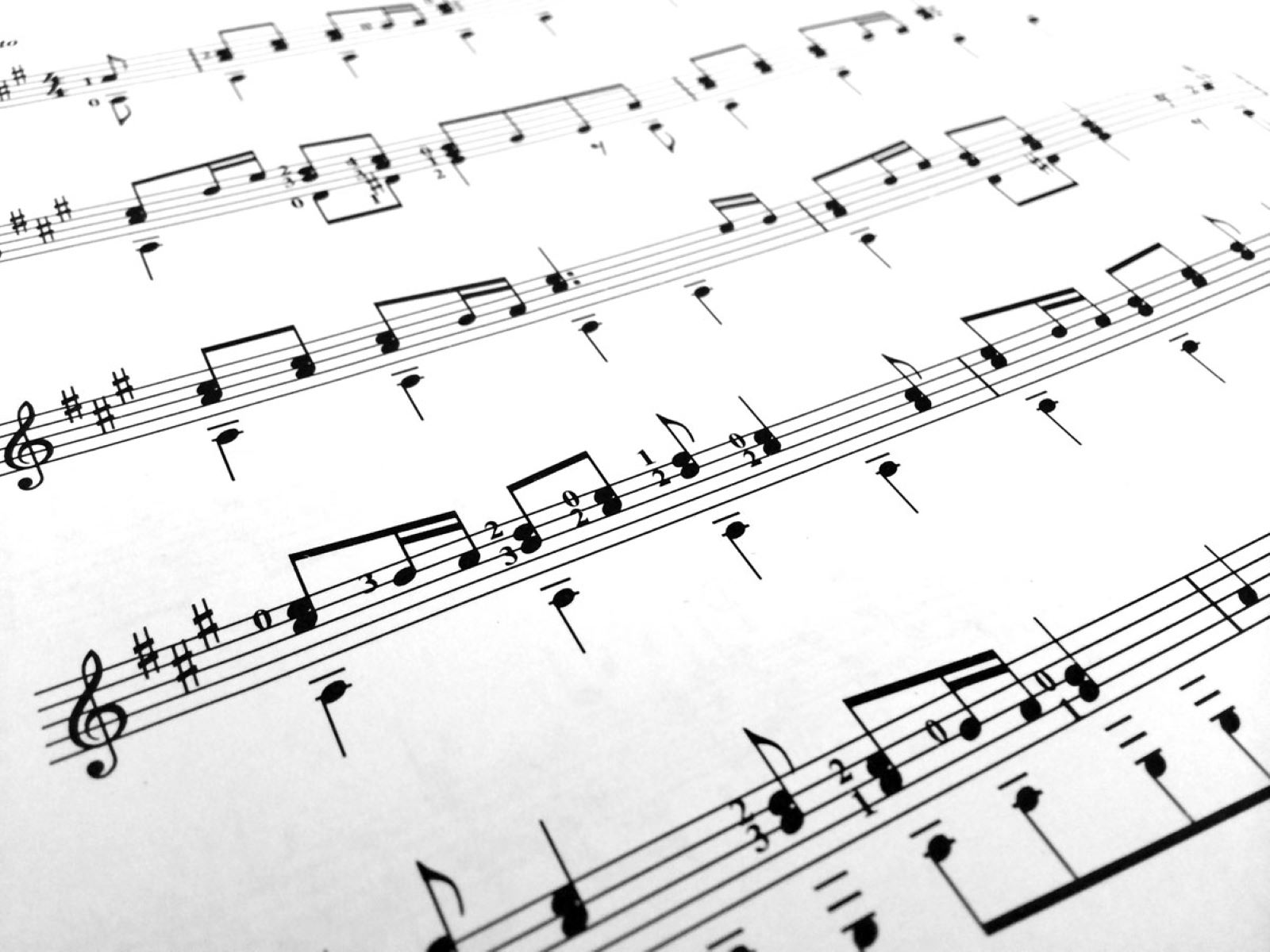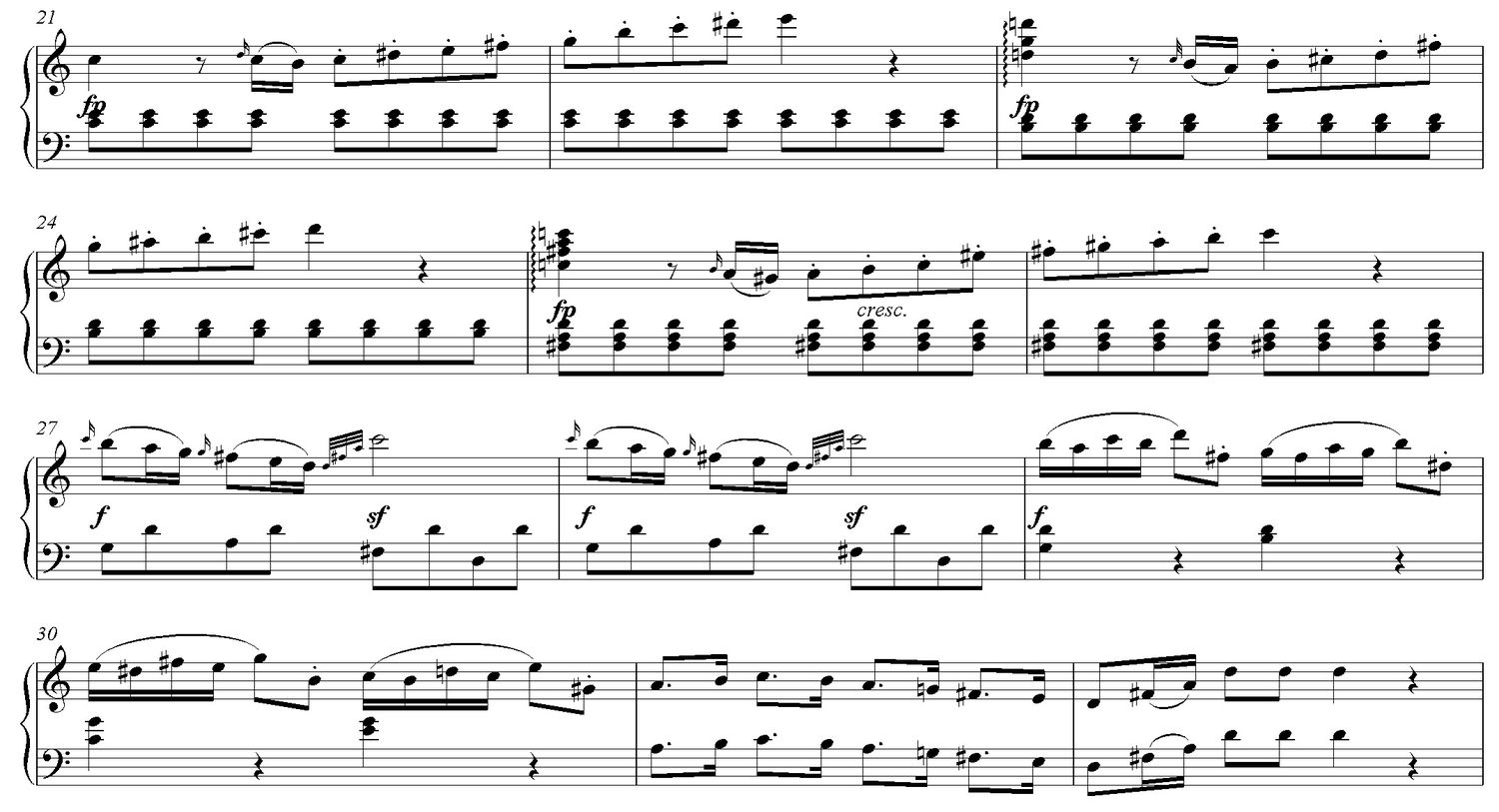Home>Production & Technology>Music Theory>How Is The AP Music Theory Exam Scored


Music Theory
How Is The AP Music Theory Exam Scored
Published: January 31, 2024
Learn how the AP Music Theory exam is scored and gain valuable insight into the evaluation process. Enhance your understanding of Music Theory.
(Many of the links in this article redirect to a specific reviewed product. Your purchase of these products through affiliate links helps to generate commission for AudioLover.com, at no extra cost. Learn more)
Table of Contents
Introduction
Welcome to the fascinating world of AP Music Theory! Whether you’re a high school student preparing for the AP Music Theory Exam or simply curious about the subject, this article will provide you with a comprehensive understanding of how the exam is scored. The AP Music Theory Exam is designed to assess a student’s knowledge and understanding of music theory concepts, including notation, harmony, melodic composition, and analysis. It is administered by the College Board and can earn students college credits depending on their performance.
Scoring on the AP Music Theory Exam is based on a set of criteria that evaluate the depth and accuracy of a student’s knowledge and skills. In this article, we will delve into the scoring rubric for both the multiple-choice and free-response sections, explore the grading criteria for free-response questions, and discuss the overall scoring process and scale. Additionally, we will provide tips and strategies for achieving a high score on the exam.
Whether you’re a beginner or an advanced music theory student, understanding how the AP Music Theory Exam is scored is essential for effective preparation. It allows you to focus your study efforts on the areas that carry the most weight in terms of scoring. So, let’s dive in and uncover the secrets behind how the AP Music Theory Exam is scored!
Overview of the AP Music Theory Exam
The AP Music Theory Exam is a rigorous assessment of a student’s knowledge and understanding of music theory concepts. It consists of two main sections: multiple-choice and free response. The exam is designed to challenge students’ abilities to recognize and analyze musical elements, as well as to demonstrate their skills in melodic composition and harmonic analysis.
The multiple-choice section consists of approximately 75 questions and covers topics such as musical notation, basic harmony, intervals, key signatures, and tonal analysis. This section assesses students’ ability to identify and analyze musical concepts and apply them in various contexts.
The free response section is divided into two parts: sight-singing and melodic and harmonic dictation. In the sight-singing portion, students are presented with a musical excerpt and are required to perform it vocally, demonstrating their ability to accurately read and interpret musical notation. The melodic and harmonic dictation section tests students’ listening skills as they listen to a musical passage and transcribe the melody and harmony by ear.
Overall, the AP Music Theory Exam aims to evaluate a student’s proficiency in the foundations of music theory and their ability to apply that knowledge to practical tasks. It assesses skills such as analysis, composition, ear training, and sight-singing – all essential components of a comprehensive music education.
It’s important to note that while prior experience in music theory is beneficial, it is not a prerequisite for taking the exam. The AP Music Theory course curriculum is designed to provide students with the necessary knowledge and skills to succeed on the exam, regardless of their previous musical background.
Now that we have a general understanding of the structure and purpose of the AP Music Theory Exam, let’s explore how the scoring process works.
Scoring Rubric for the Exam
The scoring rubric for the AP Music Theory Exam provides a clear framework for evaluating student responses and assigning scores. It ensures consistency and fairness in the scoring process. Understanding this rubric can help students better prepare and align their answers with the expectations of the examiners.
The multiple-choice section of the exam follows a straightforward scoring system. Each correct answer earns one point, while incorrect or unanswered questions do not result in any deductions. The total number of points earned on the multiple-choice section determines the corresponding subsection score. This score is then combined with the free-response section scores to calculate the overall exam score.
The free response section of the exam is graded according to specific rubrics for each task. These rubrics outline the criteria for evaluating student performance in areas such as melodic dictation, harmonic dictation, and composition. While there may be some variation in the specific requirements for each question, the rubrics provide a consistent framework for assessors to follow.
For tasks such as melodic dictation, the rubric typically evaluates pitch accuracy, rhythm accuracy, and overall completeness. Assessors listen to the student’s transcription and compare it to the original musical passage, awarding points based on the accuracy and level of detail in the response.
In tasks like harmonic dictation, the rubric assesses the accuracy of identifying chords, including their root, quality, and inversion. Students are also evaluated on their understanding of chord progression and harmonic function. The rubric for composition tasks may evaluate elements such as voice leading, harmonic progression, and form.
It’s vital for students to familiarize themselves with the specific rubrics provided for each task in the free-response section. By understanding the criteria and expectations, students can tailor their responses accordingly and maximize their potential for earning points.
Now that we’ve explored the scoring rubric for the AP Music Theory Exam, let’s take a closer look at the multiple-choice and free-response sections and the grading criteria for free-response questions.
Section 1: Multiple Choice
The multiple-choice section of the AP Music Theory Exam is the first component of the assessment. It consists of a series of questions designed to assess a student’s knowledge of music theory concepts and their ability to apply that knowledge in various musical contexts.
The multiple-choice section is comprised of approximately 75 questions, with each question presenting a musical excerpt or a theoretical concept. Students are required to analyze the given information and select the most appropriate answer from the provided options. The questions in this section cover a wide range of topics, including notation, interval recognition, key signatures, harmonic analysis, and musical construction.
Each correct answer in the multiple-choice section earns one point, with no deductions for incorrect or unanswered questions. This point system allows students to accumulate scores based on their overall performance on this section. The total number of points earned in the multiple-choice section contributes to the subsection score, which is then combined with the scores from the free-response section to calculate the final exam score.
To excel in the multiple-choice section, it is crucial for students to have a solid foundation in music theory fundamentals. This includes understanding musical notation, key signatures, scales, intervals, chord progressions, and basic harmonic analysis. Reviewing these concepts and practicing with sample questions can help students become familiar with the types of questions they are likely to encounter on the exam.
Furthermore, developing strong listening and analytical skills is essential for success in this section. Students should be able to identify melodic and rhythmic patterns, recognize harmonic progressions, and understand voice leading principles. Active engagement in listening to and analyzing music, along with focused practice on identifying musical elements, will help students sharpen their auditory perception and enhance their performance on the multiple-choice section.
Time management is also a crucial factor when approaching the multiple-choice section. With a limited amount of time to answer all the questions, it is important for students to pace themselves accordingly. They should allocate appropriate time to each question, ensuring that they have enough time to thoroughly analyze the musical excerpts or theoretical concepts presented.
By dedicating time to study music theory fundamentals, practicing with sample questions, and improving listening and analytical skills, students can approach the multiple-choice section of the AP Music Theory Exam with confidence and increase their chances of earning a high score.
Now that we have explored the multiple-choice section, let’s move on to the free-response section and examine the different components and grading criteria for these tasks.
Section 2: Free Response
The free-response section of the AP Music Theory Exam is an opportunity for students to showcase their skills in melodic and harmonic dictation, as well as melodic composition. This section allows students to demonstrate their ability to apply music theory concepts in practice and showcase their musical creativity.
The free-response section is divided into two parts: sight-singing and melodic and harmonic dictation. In the sight-singing portion, students are presented with a musical excerpt that they have never seen before. They are then required to perform the melody vocally, accurately interpreting the notated rhythm and pitch. This task assesses students’ ability to read and interpret musical notation in real-time, as well as their oral performance skills.
The melodic and harmonic dictation tasks test students’ listening and analytical skills. In the melodic dictation task, students listen to a musical passage and transcribe the melody by ear. They must accurately notate the pitches and rhythms of the melody. The harmonic dictation task assesses students’ ability to identify and notate the chords and harmonic progressions within a given musical passage. Students are expected to recognize chord qualities, inversions, and progressions through attentive listening.
In addition to dictation tasks, the free-response section may include a melodic composition task. Students are presented with a musical prompt or set of instructions and are required to compose a melody that meets the given criteria. This task evaluates students’ creativity, melodic construction skills, and understanding of melodic principles such as contour, phrase structure, and tonality.
Each task in the free-response section is individually graded according to specific rubrics that outline the criteria for scoring. These rubrics evaluate factors such as pitch accuracy, rhythm accuracy, harmonic progression, and compositional techniques. It is essential for students to familiarize themselves with these rubrics to understand the expectations and requirements for each task.
To excel in the free-response section, students should develop strong listening skills and musical intuition. Regular practice in aural training, such as transcribing melodies and analyzing chords, can help students sharpen their listening abilities. Improving keyboard proficiency can also be beneficial for melodic and harmonic dictation tasks, as it allows students to play and test their dictations to ensure accuracy. Moreover, practicing composing melodies within given constraints can help students further develop their creative and compositional skills.
By actively engaging in ear training exercises, honing their melodic and harmonic analysis skills, and fostering their creativity through melodic composition practice, students can approach the free-response section of the AP Music Theory Exam with confidence and the potential to earn high scores.
Now that we have examined the free-response section, let’s move on to understanding the grading criteria for the free-response questions.
Grading Criteria for Free Response Questions
The grading criteria for the free-response questions in the AP Music Theory Exam provide a framework for evaluating student performance in tasks such as melodic and harmonic dictation, as well as melodic composition. These criteria outline the specific factors and skills that assessors consider when assigning scores to student responses.
In tasks like melodic dictation, the grading criteria focus on pitch accuracy, rhythm accuracy, and completeness. Assessors compare the student’s transcription with the original music and award points based on the level of accuracy achieved. The transcription must accurately represent the melody’s pitches and rhythms, including details like articulation and dynamics, to earn full credit.
For harmonic dictation tasks, the grading criteria assess the accuracy of chord identification, including root, quality, and inversion. Additionally, the progression of the harmonic analysis and the understanding of harmonic function are taken into consideration. Students must demonstrate their ability to recognize and notate the chords accurately, assigning the correct qualities and inversions while also understanding the harmonic relationships between the chords in the given musical passage.
In the sight-singing portion, the grading criteria focus on the student’s ability to perform the melody with accuracy and expressiveness. Pitch accuracy, rhythmic precision, and adherence to musical details are evaluated. Students must demonstrate a clear understanding of the notated rhythm and pitch, conveying the intended musical expression through their vocal performance.
When it comes to the melodic composition task, the grading criteria evaluate the student’s ability to create a melody that meets the given guidelines. Assessors consider factors such as melodic contour, phrase structure, rhythmic variety, and adherence to tonality. The creativity and originality of the composition are also taken into account, but it is important for students to ensure that their melody adheres to the given parameters to maximize their score.
Each of these tasks has its specific rubric, outlining the criteria and point allocation for different aspects of the question. Familiarizing oneself with these rubrics is crucial for understanding what assessors are looking for and how to approach each task successfully.
It is important for students to practice these tasks regularly, honing their listening skills, developing their notational accuracy, and refining their compositional abilities. Working with sample questions, seeking feedback from teachers or peers, and analyzing model answers can all contribute to a deeper understanding of the grading criteria and better preparation for the free-response section of the exam.
Now that we have explored the grading criteria for the free-response questions, let’s move on to understanding the overall scoring process and scale of the AP Music Theory Exam.
Scoring Process and Scale
The scoring process for the AP Music Theory Exam follows a specific procedure to ensure fairness and consistency in evaluating student performance. The scores are then mapped to a standardized scale to provide an overall assessment of a student’s proficiency in music theory.
For the multiple-choice section, each correct answer earns one point, and no points are deducted for incorrect or unanswered questions. The total number of correct answers determines the subsection score for the multiple-choice section. This score is then combined with the scores from the free-response section to calculate the overall exam score.
The free-response section is graded using specific rubrics and scoring criteria for each task. The assessors follow these rubrics to evaluate student responses and assign scores based on the level of accuracy, completeness, and quality of the answers. Points are awarded for meeting specific requirements and demonstrating proficiency in different aspects of each task, such as pitch accuracy, rhythm accuracy, harmonic analysis, and compositional techniques.
Once all the scores are assigned for each section, they are weighted according to predetermined percentages. The multiple-choice section typically accounts for about 45% of the overall exam score, while the free-response section contributes to the remaining 55%. These weights ensure that both the knowledge-based and skill-based components of the exam are given due consideration in the final score.
After all the scores are weighted and combined, they are mapped to the AP Music Theory Exam’s standardized scale. This scale ranges from 1 to 5, with 5 being the highest achievable score. The specific cut-off scores for each grade level may vary from year to year, as they are determined by the College Board based on the overall performance of students across the country.
The score report that students receive after taking the AP Music Theory Exam provides detailed information about their performance. It includes the subsection scores for the multiple-choice and free-response sections, as well as the overall exam score on the 1-5 scale. Additionally, the score report may provide insights into the student’s performance in different content areas, allowing them to identify their strengths and areas for improvement.
Understanding the scoring process and scale of the AP Music Theory Exam can help students interpret their score reports and assess their performance accurately. It also provides clarity on how their scores compare to the standards set by the College Board.
Now that we have explored the scoring process and scale, let’s move on to the importance of understanding the score report.
Understanding the Score Report
After taking the AP Music Theory Exam, students receive a score report that provides valuable insights into their performance. Understanding the score report is essential for students to accurately assess their strengths, weaknesses, and areas for improvement in music theory.
The score report includes subsection scores for the multiple-choice and free-response sections, as well as the overall exam score on the 1-5 scale. These scores give students an overview of their performance in different components of the exam and provide a sense of achievement in relation to the standardized scale. A higher score indicates a stronger grasp of music theory concepts and better execution of the required tasks.
Additionally, the score report may provide detailed information regarding the student’s performance in specific content areas. This breakdown allows students to identify their strengths and weaknesses, enabling them to focus their future studies on areas that need improvement. Understanding which content areas require more attention can help students tailor their study plans and maximize their chances of earning higher scores in future exams.
Furthermore, the score report may offer additional feedback, comments, or suggestions to guide students in their music theory journey. It may highlight specific areas where students excelled or areas where they can enhance their skills. This feedback can serve as a roadmap for targeted practice and further development of musical understanding.
It is important to remember that an AP Music Theory Exam score is not only a measure of individual performance but also a benchmark for college credit and advanced placement. Many colleges and universities grant credit or placement in music theory courses based on a student’s AP exam score. Understanding the score report allows students to assess their eligibility for such credit or placement, providing a head start in their higher education journey.
Moreover, the score report can be a valuable tool for students when preparing college applications or resumes. A high AP Music Theory Exam score showcases dedication to music education, strong analytical skills, and a comprehensive understanding of music theory. It can be a notable credential that sets students apart from others when pursuing opportunities in the field of music or applying to music-related programs.
By thoroughly examining and understanding the score report, students can effectively utilize the feedback and insights provided to further enhance their music theory knowledge and skills. It serves as a valuable tool for self-assessment, guiding future studies, and opening doors to various academic and career opportunities in music.
Now that we have covered understanding the score report, let’s explore some tips and strategies for achieving a high score on the AP Music Theory Exam.
Tips for Achieving a High Score
Preparing for the AP Music Theory Exam requires a combination of solid knowledge, effective study strategies, and targeted practice. Here are some tips to help you achieve a high score on the exam:
- Master the basics: Ensure that you have a strong foundation in music theory fundamentals, including notation, key signatures, scales, intervals, and basic harmonic progressions. Review these topics thoroughly to build a solid knowledge base.
- Practice sight-singing: Sight-singing can be challenging, but with regular practice, you can improve your ability to read and perform music on the spot. Find opportunities to sight-sing different musical passages, focusing on accuracy in both pitch and rhythm.
- Develop listening skills: Active listening is crucial for tasks like melodic and harmonic dictation. Engage in regular ear training exercises, such as transcribing melodies and analyzing chord progressions. The more you practice, the better you’ll become at recognizing musical elements by ear.
- Work on your composition skills: Composing melodies within given constraints can help you develop your creative skills and melodic construction abilities. Practice composing melodies that follow specific guidelines, such as contour, phrase structure, and tonality.
- Use practice materials: Utilize sample questions, practice exams, and other resources provided by the College Board to familiarize yourself with the format and types of questions you’ll encounter on the exam. The more you practice, the more comfortable and confident you’ll feel on exam day.
- Simulate exam conditions: Set aside dedicated practice sessions where you time yourself and simulate the conditions of the actual exam. This will help you become more accustomed to the time constraints and build your test-taking stamina.
- Seek feedback: Share your practice recordings, compositions, and responses with your teacher or peers to receive constructive feedback. This input can provide invaluable insights and help you identify areas for improvement.
- Stay organized: Create a study schedule that allows you to cover all the necessary content areas and practice tasks regularly. Stay consistent and focused in your study routine, dedicating specific time to different aspects of music theory.
- Stay up to date: Stay informed about any updates or changes to the exam curriculum or format. The College Board regularly updates resources and releases new practice materials, so be sure to keep yourself updated with the latest information.
- Take care of yourself: Prioritize self-care leading up to the exam. Get sufficient rest, eat nutritious meals, and manage stress effectively. Taking care of your physical and mental well-being will support your focus and performance on exam day.
By implementing these tips and strategies, you’ll be well-equipped to achieve a high score on the AP Music Theory Exam. Consistent practice, a thorough understanding of music theory concepts, and effective test-taking skills will contribute to your success.
Now that we’ve explored tips for achieving a high score, let’s conclude our discussion on scoring the AP Music Theory Exam.
Conclusion
The AP Music Theory Exam is an opportunity for students to showcase their knowledge, understanding, and skills in the realm of music theory. Understanding how the exam is scored is crucial for effective preparation, allowing students to focus their study efforts and approach the exam with confidence. By familiarizing yourself with the scoring rubric, section breakdowns, and grading criteria, you can tailor your preparation to target the specific skills and knowledge required for success.
Throughout this article, we explored the different sections of the exam, including the multiple-choice and free-response sections. We discussed the importance of mastering music theory fundamentals and strengthening listening and analytical skills. Tips and strategies were provided to help you prepare effectively, such as practicing sight-singing, developing composition skills, and utilizing practice materials.
Furthermore, we discussed the scoring process and scale of the exam, emphasizing the significance of understanding the score report. The score report provides valuable insights into your performance, allowing you to identify strengths and areas for improvement. It also serves as a benchmark for college credit and placement opportunities.
Remember, achieving a high score on the AP Music Theory Exam requires consistent effort, practice, and a comprehensive understanding of the subject matter. Dedicate time to study, engage in active listening, and seek feedback to refine your skills. With diligent preparation and a solid understanding of the exam’s scoring process, you can maximize your chances of earning a high score and gaining recognition for your music theory proficiency.
Best of luck as you embark on your AP Music Theory Exam journey. Embrace the joy of music theory and embrace the rewarding experience of deepening your understanding and appreciation of this beautiful art form.











